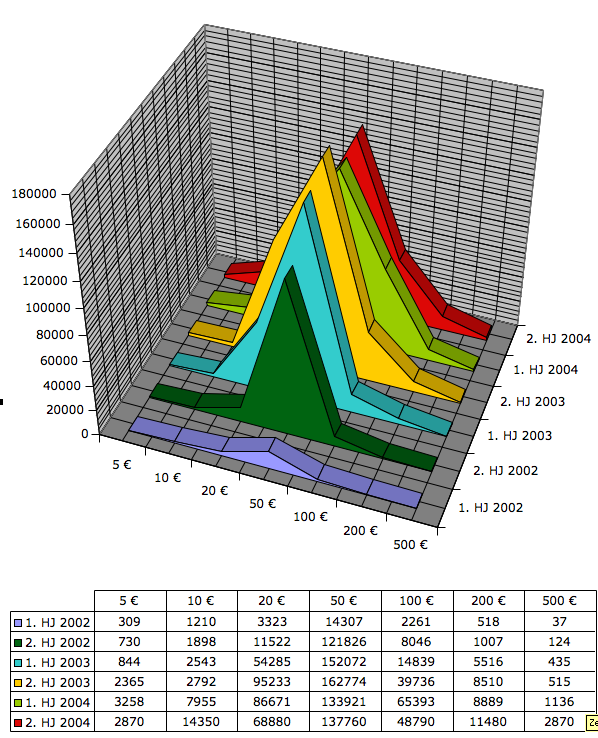About a year ago I did a visual reperesentaion of the European Central Banks bi-annual statistics on counterfeit Euro banknotes. Two reports later, a interesting picture begins to emerge. The first noticable trend is that the forgeries of higher denominations, the 100, 200 and 500 notes seem to be on the rise.

Given the relatively high cost of a good counterfeit Euro note, it might make economic sense to move to higher values per note. Also, most people seldom have a note larger then 100 Euro in their hands. Meanwhile anything larger then 50 has ceased to be universal legal tender in a lot of shops, they simply refuse to accept the notes. As we see in the statitistics, this is still only to justify with the higher relative damage if a small shop accepts a false 500 Euro note, which might be a full days revenue. The bulk of forgeries seems still to be at 50 Euro.
The thing that really puzzles me is that the ECB has changed its statistics reporting. While for all half-years so far the ECB provided precise statistics, for the last half of 2004 they resorted to only provide an approiximate figure and percentages of the confiscated false Euro notes in relation to the approximate total! Probably something big and nasty is in hiding there, a theory strengthened by the current intense talks about the next generation of security features in a new generation of Euro notes due sometime in the next years. This new Euro generation could theoretically include RFID tags , which creates brand new threat models and logistics problems. The most trivial but problematic question would be wether an Euro note is still valid when the RFID tag is defunct. With the passports, the solution is that the passport is still valid if the RFID is damaged, as the printed security measures are judged to be by far sufficient against todays forger technologies. Other scenarios like criminals scanning for wealthy victims could probably be reduced by technological means, but never excluded completely.
Who thinks that cash is still relatively anonymous today, should read the paper On the Anonymity of Banknotes by Dennis Kügler.